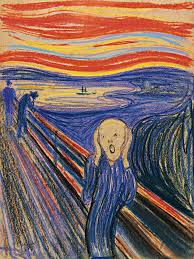Baroque Blog
Baroque Art Hannah Brooks
The Ecstasy of St. Teresa: Scultpure by Gian Lorenzo Bernini
Introduction
This week I chose to examine the sculpture "The Ecstasy of St. Teresa" by Gian Lorenzo Bernini. This sculpture was created in 1647 and was finished in 1652 in Rome. This sculpture truly embodies the values that were focused on during the Baroque era. This era of art was categorized by dramatics, with movement, deep color, and evoking emotion from the viewer. This sculpture is breathtaking and it shows how complex one's emotions can be with a piece of art. The hovering figure seems to be levitating and immediately grabs the viewer's attention. There are many ornate details as well with the interwoven details of the figure's clothing. There is a cupid-like figure which appears to be an angel holding an arrow. There is a delicate and precise manner in which Bernini portrayed these figures. This sculpture is held in a chapel further adding to the details of the sculpture. The size of the chapel and the sculpture work together. The fact that they are set on a cloud makes the figures appear as though they are floating. This is contrasting because this is made of heavy marble. This sculpture is located in the Church of Santa Maria della Vittoria and features the subject being Teresa of Avila.Historical Influence/ Baroque style
The Council of Trent during this time wanted art to place an emphasis on the Saints. Saint Teresa of Avilas' sculpture is a very great example of how Baroque art and the Council of Trent influenced this sculpture. The Council of Trent also influenced heavily the creation of this sculpture due to their evergrowing devotion to the saints. This sculpture is a depiction of a mystical experience with Saint Teresa. It gives the viewer an idea that Saints are above us and seem to float and create a mystical experience or alternative reality for the viewer. It is a reminder that we are not all Saints and we do not float on clouds. It reminds you that art can transport us to another universe in a sense. Bernini is considered the designer of the Baroque style of sculptures which included depth and dimension which here is showcased in the cloud. Bernini took his influence for this sculpture from an autobiography done by Saint Teresa. Her depiction here is dramatic due to the size of the sculpture and the way Saint Teresa was depicted to be flying. This sculpture is the framework for how other sculptors during the Baroque era continued their work of sculptures.
When comparing Bernini's work to a sculpture during the Renaissance the major difference is the dramatic effects created in the Baroque Era. He creates a highly emotional piece. Renaissance sculptures were more idealized and restrained compared to those of the Baroque era. The Renaissance focused on more classical forms and realistic proportions. When looking for a comparison to a Renaissance sculpture another depiction of a religious figure is Michelangelo's David sculpture. His sculpture however focuses very much on the realistic aspects of David. His being naked as well was a huge Renaissance factor. However, Saint Teresa can be seen fully covered in an elegant appearing white covering. She seems to float in an unrealistic not human way. David however is very much portrayed as a regular human. His features are focused on him being and depicted realistically.
I personally think Bernini created a beautiful piece. His choice of portraying St. Teresa in a way that she is floating creates a beautiful work. Being a viewer, I immediately felt a sense of peace when viewing this sculpture. I felt transported to another reality with the way that this seems to depict a world out there that is bigger than ours.
David by Michelangelo
History, Accessible Art. “Differences between Renaissance and Baroque Art.” AccessibleArtHistory, AccessibleArtHistory, 8 Oct. 2021, .www.accessiblearthistory.com/post/differences-between-renaissance-and-baroque-art.
Fajordano. “The Council of Trent and Its Impact on Baroque Art.” Fajordano, 26 June 2013, fajordano.wordpress.com/2013/06/16/the-council-of-trent-and-its-impact-on-baroque-art/.
“Council of Trent.” CATHOLIC ENCYCLOPEDIA: Council of Trent, www.newadvent.org/cathen/15030c.htm. Accessed 10 Oct. 2024.
“Art: The Ecstasy of St. Teresa.” Annenberg Learner, 24 Sept. 2019, . www.learner.org/series/art-through-time-a-global-view/dreams-and-visions/the-ecstasy-of-st-teresa




This comment has been removed by the author.
ReplyDelete
ReplyDeleteWhat a great description of this sculpture. I didn’t realize that it was up off the ground, appearing to float. What a contrast that would be, and awe-inspiring! Bernini also did a great job with her expression. She truly appears to be in ecstasy. I also like your comparison to Michelangelo’s David. In comparison, it’s very clear to see the dramatic effect of Bernin’s St. Teresa, with so much happening, compared to David’s perfect, still body.
Bernin’s sculpture fills me with wonder and awe.
wow such a beautiful piece! i think it is cool that the sculpture is off the ground, my dream is to go to rome and now after reading your blog post i hope to go see this sculpture one day in real life not just through pictures. good work with this post hannah.
ReplyDelete